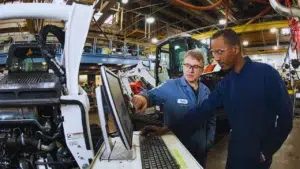Making the decision to start with a bare-bones PC is one of the best initial steps in the exciting world of custom PCs. Whether you’re a casual user, gamer, or maker, this simplified approach to constructing lets you learn the fundamentals while saving money and personalizing your setup.
Why Choose a Barebones PC to Start Your Custom Build

You can bypass the most complicated procedures and concentrate on customizing by using a barebones PC, which provides you with the necessary hardware—a motherboard, power supply, and occasionally CPU—pre-mounted. Barebones systems eliminate the worry of component compatibility and significantly cut down on build time, in contrast to complete do-it-yourself projects, where every component is delivered separately.
Because of this, it’s particularly helpful for novices who want the excitement of creating a PC without the crushing burden. It offers a shortcut without compromising flexibility for seasoned builders. The platform is ideal for growing with your needs, whether that means adding a powerful GPU or increasing your memory.
Benefits of Using a Barebones PC
| Feature | Benefit |
| Pre-installed Hardware | Less technical complexity |
| Lower Initial Cost | Budget-friendly start |
| Upgrade Flexibility | Customize CPU, RAM, storage later |
| Faster Setup | Skip full builds, get running faster |
| Great Learning Tool | Understand the components of a PC |
How Barebones PCs Work in the Custom Build Ecosystem

Purchasing a barebones PC gives you a partially built device that yet allows for customization. It’s similar to ordering a pizza with sauce and crust, but you still get to pick the toppings. Installing parts like RAM, hard disks, graphics cards, and occasionally even the operating system is your responsibility.
In addition to making the technical part easier, this framework enables you to choose technology that meets your unique requirements, such as running games, generating videos, or multitasking with several applications.
Key Components Typically Included in a Barebones PC
Typically, barebones PCs come with a few essential parts pre-installed. These frequently consist of:
- A compatible case
- Motherboard power supply (sometimes with CPU and cooling)
- Simple I/O ports
The remainder is up to you, allowing you to choose performance components like SSDs, RAM, and GPUs based on your requirements and financial constraints.
Barebones PC vs. Traditional Custom Build
| Feature | Barebones PC | Full Custom Build |
| Build Time | Faster, partially assembled | Longer, fully DIY |
| Learning Curve | Lower, good for beginners | Higher, more complex |
| Compatibility Concerns | Fewer, pre-matched components | More, need full knowledge |
| Cost | Lower upfront | Can be higher upfront |
| Upgrade Potential | High | Very High |
Who Should Consider a Barebones PC?
A barebones PC removes the most difficult components for novice builders while allowing them to experience the customization process. Additionally, it’s perfect for: Students in need of an affordable PC
- Professionals seeking a small, quiet workspace
- Gamers switching from consoles
- Hobbyists seeking an educational endeavor that isn’t overly complicated
Barebones PCs are even used by IT departments and tech repair businesses to expedite deployment while preserving customization flexibility.
Real-World Examples of Barebones PC Builds
Suppose you are constructing a low-cost gaming PC. You can add a Ryzen 5 CPU, 16GB RAM, a 1TB SSD, and a mid-tier NVIDIA GPU to a mini-ITX barebones kit that comes with the motherboard and power supply for a fraction of the price of a pre-built gaming setup.
With a small Shuttle or Intel NUC barebones device, you may add only the RAM and storage you require for office installations, saving money and space. Conversely, by combining barebones towers with top-tier processors and large-capacity drives, creators can construct potent editing stations.
What to Look for When Buying a Barebones PC

Since not all kits are made equal, it’s critical to determine your needs beforehand. Here’s something to think about:
- Compatibility of CPUs (AMD or Intel)
- Features of the motherboard (PCIe lanes, M.2 compatibility, and RAM slots)
- Wattage of the Power Supply
- Form Factor (Full Tower, Mid Tower, Mini)
- Airflow and Cooling Options
Remember to look for extra features like pre-installed operating systems or Wi-Fi cards. Some kits have more included benefits, while others only provide a basic framework.
Installing Components in a Barebones PC – The Easy Way
Here is an example of a standard installation procedure once you receive your kit:
- Place RAM sticks into the slots on the motherboard.
- Install your storage device (SSD/HDD) in the appropriate bays.
- Securely insert the GPU into the PCIe slot.
- Attach the extra fans and power cords.
- Install the OS of your choice after booting up.
All you need is patience and a little online assistance from YouTube or forums; sophisticated instruments are not necessary. For ease of installation, a lot of barebones PC kits also include instructions or labeled parts.
Why Barebones PC Builds Are Great for Future Upgrades
The upgrade path is what makes barebones computers even more alluring. Start with the fundamentals and work your way up:
- Increase RAM for more seamless multitasking.
- For faster storage, add SSDs.
- To improve rendering or gameplay, swap out the GPU.
- As your power increases, use better cooling methods.
Rather than spending a lot of money up front on high-end specs you won’t need right away, you may spread out your investment over time.
Start Your Custom Journey Today
This is your chance to enter the PC building if you’ve been waiting. You can develop smarter, not harder, using a barebones PC. It’s all about taking the first step; you don’t have to be a technology expert to get started. Start with what you need and expand as your needs and abilities change.
Wrapping Up
For anyone interested in building a bespoke computer without jumping straight in, a barebones PC is the ideal place to start. In one convenient package, it strikes a balance between price, performance, flexibility, and education. This semi-custom approach allows you to expand your workspace, whether you’re putting up a home office, gaming station, or creative workstation.
FAQs
First of all, what is a bare-bones PC?
A partially constructed computer system is known as a “barebones PC.” Typically, it comes with a motherboard, power supply, and case. Occasionally, the cooling system and CPU are also included. To finish the setup, users add the RAM, storage, and graphics card of their choice. For novice builders, it streamlines the procedure.
Can you play games on bare-bones PCs?
Yes, with the correct parts, bare-bones PCs may be great for gaming. To improve performance, you can start with a strong base and then add a strong GPU, fast RAM, and SSDs. Due of the cost savings and customization possibilities, many gamers favor this path.
How can I determine whether my components are compatible with a barebones PC?
Compatible parts like CPU types, RAM speeds, and storage interfaces are listed in the majority of barebones kits. Verify the power supply wattage and motherboard specs. Compatibility guidelines are frequently available on manufacturer and online shop websites to assist you in selecting the appropriate parts.
Will it be possible to upgrade a basic PC in the future?
The design of barebones PCs prioritizes adaptability. Upgrading your GPU, adding more storage, or changing the memory is simple. They are therefore perfect for users who wish to begin small and grow their system in accordance with their future requirements and financial constraints.
Is using a bare-bones PC more affordable than purchasing a prebuilt one?
Yes, in a lot of instances. With barebones PCs, you can avoid spending money on extraneous functionality or hardware. By choosing only what you need right now and upgrading as needed, you may more effectively manage your money. For many users, it’s a cost-effective approach.
Is technical expertise required to put together a basic PC?
While not required, basic technical expertise is beneficial. Many users install components by following printed manuals or online tutorials. Compared to a complete custom build, the learning curve is less severe because essential hardware is already installed. Research and patience go a long way.
Which companies sell the top bare-bones PC kits?
ASUS, MSI, Gigabyte, Intel (NUC), and Shuttle are well-known and trustworthy brands of barebones PCs. Each provides packages for various purposes, ranging from performance gaming rigs to small office installations. Before making a purchase, always check specifications and user reviews.

















